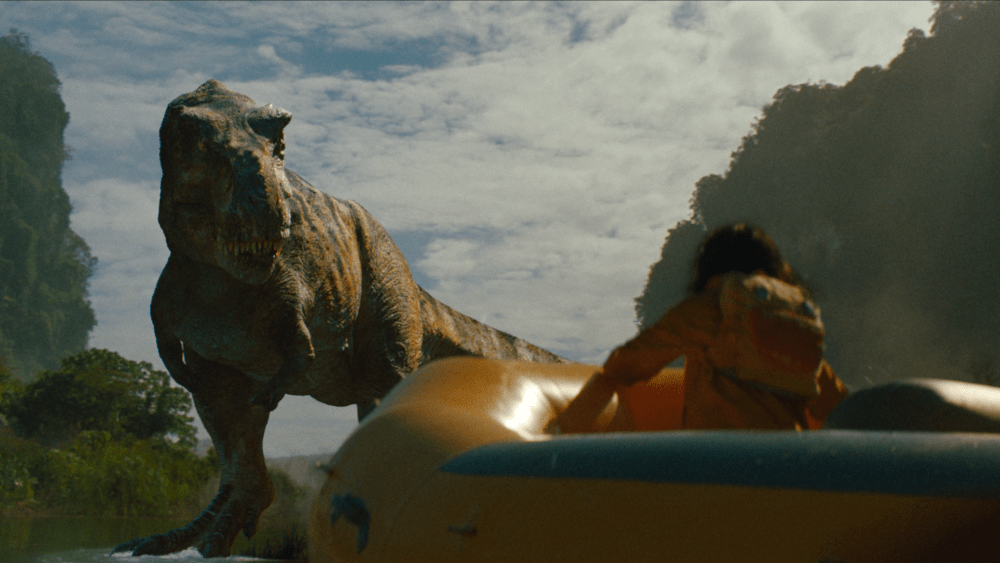For 50 years, the team at Industrial Light & Magic has been at the forefront of technological innovation in storytelling.
It all began when George Lucas realized that no facility could possibly deliver what he had in mind for “Star Wars,” and so Lucasfilm’s visual effects division, Industrial Light & Magic was born. Since then, dinosaurs, digital Yoda, cyborgs and water tentacles are a few of the company’s creations that
have changed the world of effects.
In celebration of 50 years, ILM’s creative director Rob Coleman breaks down five of its greatest creations.
Davy Jones
“He’s an amazing character,” Coleman says of the character who first made an appearance in “Pirates of the Caribbean: Dead Man’s Chest.” “The high-water mark on that film was that it’s based on Bill Nighy’s performance. Hal Hickel, the animation supervisor, and John Knoll, the visual-effects supervisor, worked with Gore Verbinski on ensuring that ILM animators were leveraging what Bill brought to that performance. The animators matched frame by frame all the little quirks that he had in his face, eyes and lips. It’s fully digital.”
Rango

Rango
Industrial Light & Magic
“ILM as a company, and in particular, the animators, were ready to take on this astounding animated feature. This was a collaboration between Johnny Depp, who voiced and acted Rango. We used motion capture. Johnny and the other actors are performing, and they have limited props, but they’re acting out the scenes. The animators got to look at that, talk to Gore and take the bits that captured Rango’s performance. They took all the bits that Johnny was doing physically, and animators added their flavor on top of it.”
Stich – Live Action

DISNEY
“The animated feature is beloved. When you’re going into a character that audiences already love, and you’re transitioning them from a hand-drawn character to three-dimensional, the audience has to believe that they’re in the same space. Our team studied the original film and then did their interpretation. That’s what we’re always doing in animation — we’re trying to breathe a little bit of humanity and trying to make these things that aren’t really alive feel alive.”.
T-Rex

“ILM was doing astounding work leading up to ‘Jurassic Park.’ Think of the T-1000 [in “Terminators 2”] or the water snake in ‘The Abyss,’ ILM is standing on its shoulders as it got ready to take on dinosaurs.
“Those were originally going to be stopmotion or puppet animation, but there’s a group at ILM that was really innovating with computer graphics in the lead-up. They famously presented a version of the T-Rex
as a set of bones walking around in a liveaction field. In that moment, [“Jurassic Park” director] Steven Spielberg recognized things were changing in the world of visual effects and filmmaking in general. So a small team of six animators on that film, and a team of 40 artists in the computer graphics department at ILM crafted some pretty remarkable work, including the T-Rex. You believed completely, as an audience member, that it was there and it was chasing Jeff Goldblum, and he was in real peril because we could see what it had done to the Jeep, and what it did to the lawyer. “It’s an honor for the people at ILM to continue and develop that dinosaur and versions of that as it goes into the various films. We love it because it’s a connection to our history.
Yoda

Yoda was a high bar to get over in my book. Yoda was a puppet in ‘The Empire Strikes Back,’ performed magically by Frank Oz. As I was preparing to do digital Yoda, it was about trying to balance the essence of the character. Frank Oz performed the voice again for Yoda. So we had that through line. I got a lot of input from Frank. I didn’t want to make him different. I wanted to honor what had come before and then modernize him and have him be consistent. Initially, he was going to be digital because there was no way to do the Yoda lightsaber fight as a puppet. As it turned out, he was fully digital in ‘Star Wars: Attack of the Clones.’

